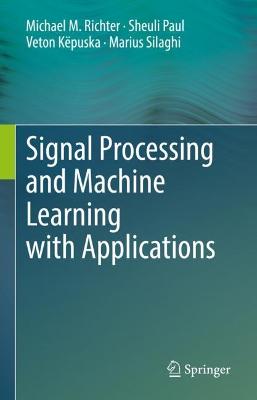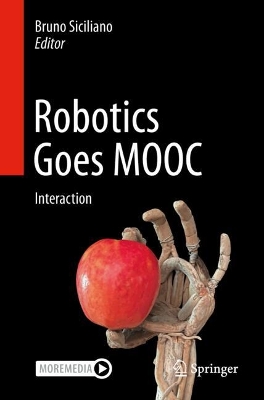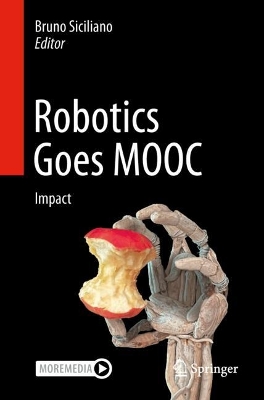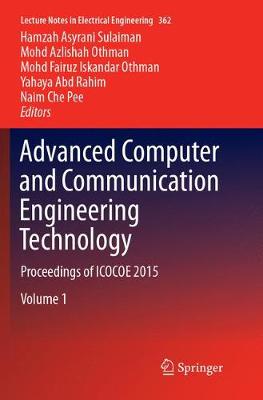Signal Processing and Machine Learning with Applications
 -15%
portes grátis
-15%
portes grátis
Signal Processing and Machine Learning with Applications
Paul, Sheuli; Silaghi, Marius; Kepuska, Veton; Richter, Michael M.
Springer International Publishing AG
10/2022
607
Dura
Inglês
9783319453712
15 a 20 dias
Descrição não disponível.
Part I Realms of Signal Processing.- 1 Digital Signal Representation.- 1.1 Introduction.- 1.2 Numbers.- 1.2.1 Numbers and Numerals.- 1.2.2 Types of Numbers.- 1.2.3 Positional Number Systems.- 1.3 Sampling and Reconstruction of Signals.- 1.3.1 Scalar Quantization.- 1.3.2 Quantization Noise.- 1.3.3 Signal-To-Noise Ratio.- 1.3.4 Transmission Rate.- 1.3.5 Nonuniform Quantizer.- 1.3.6 Companding.- 1.4 Data Representations.- 1.4.1 Fixed-Point Number Representations.- 1.4.2 Sign-Magnitude Format.- 1.4.3 One's-Complement Format.- 1.4.4 Two's-Complement Format.- 1.5 Fix-Point DSP's.- 1.6 Fixed-Point Representations Based on Radix-Point.- 1.7 Dynamic Range.- 1.8 Precision.- 1.9 Background Information.- 1.10 Exercises.- 2 Signal Processing Background.- 2.1 Basic Concepts.- 2.2 Signals and Information.- 2.3 Signal Processing.- ix.- x Contents.- 2.4 Discrete Signal Representations.- 2.5 Delta and Impulse Function.- 2.6 Parseval's Theorem.- 2.7 Gibbs Phenomenon.- 2.8 Wold Decomposition.- 2.9 State Space Signal Processing.- 2.10 Common Measurements.- 2.10.1 Convolution.- 2.10.2 Correlation.- 2.10.3 Auto Covariance.- 2.10.4 Coherence.- 2.10.5 Power Spectral Density (PSD).- 2.10.6 Estimation and Detection.- 2.10.7 Central Limit Theorem.- 2.10.8 Signal Information Processing Types.- 2.10.9 Machine Learning.- 2.10.10Exercises.- 3 Fundamentals of Signal Transformations.- 3.1 Transformation Methods.- 3.1.1 Laplace Transform.- 3.1.2 Z-Transform .- 3.1.3 Fourier Series.- 3.1.4 Fourier Transform.- 3.1.5 Discrete Fourier Transform and Fast Fourier Transform .- 3.1.6 Zero Padding.- 3.1.7 Overlap-Add and Overlap-Save Convolution.- Algorithms.- 3.1.8 Short Time Fourier Transform (STFT).- 3.1.9 Wavelet Transform.- 3.1.10 Windowing Signal and the DCT Transforms.- 3.2 Analysis and Comparison of Transformations.- 3.3 Background Information.- 3.4 Exercises.- 3.5 References.- 4 Digital Filters.- 4.1 Introduction.- 4.1.1 FIR and IIR Filters.- 4.1.2 Bilinear Transform.-4.2 Windowing for Filtering.- 4.3 Allpass Filters.- 4.4 Lattice Filters.- 4.5 All-Zero Lattice Filter.- 4.6 Lattice Ladder Filters.- Contents xi.- 4.7 Comb Filter.- 4.8 Notch Filter.- 4.9 Background Information.- 4.10 Exercises.- 5 Estimation and Detection.- 5.1 Introduction.- 5.2 Hypothesis Testing.- 5.2.1 Bayesian Hypothesis Testing.- 5.2.2 MAP Hypothesis Testing.- 5.3 Maximum Likelihood (ML) Hypothesis Testing.- 5.4 Standard Analysis Techniques.- 5.4.1 Best Linear Unbiased Estimator (BLUE).- 5.4.2 Maximum Likelihood Estimator (MLE).- 5.4.3 Least Squares Estimator (LSE).- 5.4.4 Linear Minimum Mean Square Error Estimator.- (LMMSE).- 5.5 Exercises.- 6 Adaptive Signal Processing.- 6.1 Introduction.- 6.2 Parametric Signal Modeling.- 6.2.1 Parametric Estimation.- 6.3 Wiener Filtering.- 6.4 Kalman Filter.- 6.4.1 Smoothing.- 6.5 Particle Filter.- 6.6 Fundamentals of Monte Carl.- 6.6.1 Importance Sampling (IS).- 6.7 Non-Parametric Signal Modeling.- 6.8 Non-Parametric Estimation.- 6.8.1 Correlogram.- 6.8.2 Periodogram.- 6.9 Filter Bank Method.- 6.10 Quadrature Mirror Filter Bank (QMF).- 6.11 Background Information.- 6.12 Exercises.- 7 Spectral Analysis.- 7.1 Introduction.- 7.2 Adaptive Spectral Analysis.- 7.3 Multivariate Signal Processing.- 7.3.1 Sub-band Coding and Subspace Analysis.- 7.4 Wavelet Analysis.- 7.5 Adaptive Beam Forming.- xii Contents.- 7.6 Independent Component Analysis (ICA).- 7.7 Principal Component Analysis (PCA).- 7.8 Best Basis Algorithms.- 7.9 Background Information.- 7.10 Exercises.- Part II Machine Learning and Recognition.- 8 General Learning.- 8.1 Introduction to Learning.- 8.2 The Learning Phases.- 8.2.1 Search and Utility.- 8.3 Search.- 8.3.1 General Search Model.- 8.3.2 Preference relations.- 8.3.3 Different learning methods.- 8.3.4 Similarities .- 8.3.5 Learning to Recognize.- 8.3.6 Learning again.- 8.4 Background Information.- 8.5 Exercises.- 9 Signal Processes, Learning, and Recognition.- 9.1 Learning.- 9.2Bayesian Formalism.- 9.2.1 Dynamic Bayesian Theory.- 9.2.2 Recognition and Search.- 9.2.3 Influences.- 9.3 Subjectivity.- 9.4 Background Information.- 9.5 Exercises.- 10 Stochastic Processes.- 10.1 Preliminaries on Probabilities.- 10.2 Basic Concepts of Stochastic Processes.- 10.2.1 Markov Processes.- 10.2.2 Hidden Stochastic Models (HSM).- 10.2.3 HSM Topology.- 10.2.4 Learning Probabilities.- 10.2.5 Re-estimation.- 10.2.6 Redundancy.- 10.2.7 Data Preparation.- 10.2.8 Proper Redundancy Removal.- 10.3 Envelope Detection.- 10.3.1 Silence Threshold Selection.- 10.3.2 Pre-emphasis.- Contents xiii.- 10.4 Several Processes.- 10.4.1 Similarity.- 10.4.2 The Local-Global Principle.- 10.4.3 HSM Similarities.- 10.5 Conflict and Support.- 10.6 Examples and Applications.- 10.7 Predictions.- 10.8 Background Information.- 10.9 Exercises.- 11 Feature Extraction.- 11.1 Feature Extractions.- 11.2 Basic Techniques.- 11.2.1 Spectral Shaping.- 11.3 Spectral Analysis and Feature Transformation.- 11.3.1 Parametric Feature Transformations and Cepstrum.- 11.3.2 Standard Feature Extraction Techniques.- 11.3.3 Frame Energy.- 11.4 Linear Prediction Coe_cients (LPC).- 11.5 Linear Prediction Cepstral Coe_cients (LPCC).- 11.6 Adaptive Perceptual Local Trigonometric Transformation.- (APLTT).- 11.7 Search.- 11.7.1 General Search Model.- 11.8 Predictions.- 11.8.1 Purpose.- 11.8.2 Linear Prediction.- 11.8.3 Mean Squared Error Minimization.- 11.8.4 Computation of Probability of an Observation Sequence.- 11.8.5 Forward and Backward Prediction.- 11.8.6 Forward-Backward Prediction.- 11.9 Background Information.- 11.10Exercises.- 12 Unsupervised Learning.- 12.1 Generalities.- 12.2 Clustering Principles.- 12.3 Cluster Analysis Methods.- 12.4 Special Methods.- 12.4.1 K-means.- 12.4.2 Vector Quantization (VQ).- 12.4.3 Expectation Maximization (EM).- 12.4.4 GMM Clustering.- 12.5 Background Information.- 12.6 Exercises.- xiv Contents.- 13 Markov Model and Hidden Stochastic Model.-13.1 Markov Process.- 13.2 Gaussian Mixture Model (GMM).- 13.3 Advantages of using GMM.- 13.4 Linear Prediction Analysis.- 13.4.1 Autocorrelation Method.- 13.4.2 Yule-Walker Approach.- 13.4.3 Covariance Method.- 13.4.4 Comparison of Correlation and Covariance methods.- 13.5 The ULS Approach.- 13.6 Comparison of ULS and Covariance Methods.- 13.7 Forward Prediction.- 13.8 Backward Prediction.- 13.9 Forward-Backward Prediction.- 13.10Baum-Welch Algorithm.- 13.11Viterbi Algorithm.- 13.12Background Information.- 13.13Exercises.- 14 Fuzzy Logic and Rough Sets.- 14.1 Rough Sets.- 14.2 Fuzzy Sets.- 14.2.1 Basis Elements.- 14.2.2 Possibility and Necessity.- 14.3 Fuzzy Clustering.- 14.4 Fuzzy Probabilities.- 14.5 Background Information.- 14.6 Exercises.- 15 Neural Networks.- 15.1 Neural Network Types.- 15.1.1 Neural Network Training.- 15.1.2 Neural Network Topology.- 15.2 Parallel Distributed Processing.- 15.2.1 Forward and Backward Uses.- 15.2.2 Learning.- 15.3 Applications to Signal Processing.- 15.4 Background Information.- 15.5 Exercises.- Part III Real Aspects and Applications.- Contents xv.- 16 Noisy Signals.- 16.1 Introduction.- 16.2 Noise Questions.- 16.3 Sources of Noise.- 16.4 Noise Measurement.- 16.5 Weights and A-Weights.- 16.6 Signal to Noise Ratio (SNR).- 16.7 Noise Measuring Filters and Evaluation.- 16.8 Types of noise.- 16.9 Origin of noises.- 16.10Box Plot Evaluation.- 16.11Individual noise types.- 16.11.1Residual.- 16.11.2Mild.- 16.11.3Steady-unsteady Time varying Noise.- 16.11.4Strong Noise.- 16.12Solution to Strong Noise: Matched Filter.- 16.13Background Information.- 16.14Exercises.- 17 Reasoning Methods and Noise Removal.- 17.1 Generalities.- 17.2 Special Noise Removal Methods.- 17.2.1 Residual Noise.- 17.2.2 Mild Noise.- 17.2.3 Steady-Unsteady Noise.- 17.2.4 Strong Noise.- 17.3 Poisson Distribution.- 17.3.1 Outliers and Shots.- 17.3.2 Underlying probability of Shots.- 17.4 Kalman Filter.- 17.4.1 Prediction Estimates.-17.4.2 White noise Kalman filtering.- 17.4.3 Application of Kalman filter.- 17.5 Classification, Recognition and Learning.- 17.5.1 Summary of the used concepts.- 17.6 Principle Component Analysis (PCA).- 17.7 Reasoning Methods.- 17.7.1 Case-Based Reasoning (CBR).- 17.8 Background Information.- 17.9 Exercises.- xvi Contents.- 18 Audio Signals and Speech Recognition.- 18.1 Generalities of Speech.- 18.2 Categories of Speech Recognition.- 18.3 Automatic Speech Recognition.- 18.3.1 System Structure.- 18.4 Speech Production Model.- 18.5 Acoustics.- 18.6 Human Speech Production.- 18.6.1 The Human Speech Generation.- 18.6.2 Excitation.- 18.6.3 Voiced Speech.- 18.6.4 Unvoiced Speech.- 18.7 Silence Regions.- 18.8 Glottis.- 18.9 Lips.- 18.10Plosive Speech Source.- 18.11Vocal-Tract.- 18.12Parametric and Non-Parametric Models.- 18.13Formants.- 18.14Strong Noise.- 18.15Background Information.- 18.16Exercises.- 19 Noisy Speech.- 19.1 Introduction.- 19.2 Colored Noise.- 19.2.1 Additionaltypes of Colored Noise.- 19.3 Poisson Processes and Shots.- 19.4 Matched Filters.- 19.5 Shot Noise.- 19.6 Background Information.- 19.7 Exercises.- 20 Aspects Of Human Hearing.- 20.1 Human Ear.- 20.2 Human Auditory System.- 20.3 Critical Bands and Scales.- 20.3.1 Mel Scale.- 20.3.2 Bark Scale.- 20.3.3 Erb Scale.- 20.3.4 Greenwood Scale.- 20.4 Filter Banks.- 20.4.1 ICA Network.- 20.4.2 Auditory Filter Banks.- 20.4.3 Filter Banks.- Contents xvii.- 20.4.4 Mel Critical Filter Bank.- 20.5 Psycho-acoustic Phenomena.- 20.5.1 Perceptual Measurement.- 20.5.2 Human Hearing and Perception.- 20.5.3 Sound Pressure Level (SPL).- 20.5.4 Absolute Threshold of Hearing (ATH).- 20.6 Perceptual Adaptation.- 20.7 Auditory System and Hearing Model.- 20.8 Auditory Masking and Masking Frequency.- 20.9 Perceptual Spectral Features.- 20.10Critical Band Analysis.- 20.11Equal Loudness Pre-emphasis.- 20.12Perceptual Transformation.- 20.13Feature Transformation.- 20.14Filters and Human Ear.- 20.15Temporal Aspects.- 20.16Background Information.- 20.17Exercises.- 21 Speech Features.- 21.1 Generalities.- 21.2 Cost Functions.- 21.3 Special Feature Extractions.- 21.3.1 MFCC Features.- 21.3.2 Feature Transformation applying DCT.- 21.4 Background Information.- 21.5 Exercises.- 22 Hidden Stochastic Model for Speech.- 22.1 General.- 22.2 Hidden Stochastic Model.- 22.3 Forward and Backward Predictions.- 22.3.1 Forward Algorithm.- 22.3.2 Backward Algorithm.- 22.4 Forward-Backward Prediction.- 22.5 Burg Approach.- 22.6 Graph Search.- 22.6.1 Recognition Model with Search.- 22.7 Semantic Issues and Industrial Applications.- 22.8 Problems with Noise.- 22.9 Aspects of Music.- 22.10Music reception.- 22.11Background Information.- 22.12Exercises.- xviii Contents.- 23 Different Speech Applications - Part A.- 23.1 Generalities.- 23.2 Example Applications.- 23.2.1 Experimental laboratory.- 23.2.2 Health care support (everyday actions).- 23.2.3 Diagnostic support for persons with possible dementia.- 23.2.4 Noise.- 23.3 Background Information.- 23.4 Exercises.- 24 Different Speech Applications - Part B.- 24.1 Introduction.- 24.2 Discrete-Time Signals.- 24.3 Speech Processing.- 24.3.1 Framing.- 24.3.2 Pre-emphasis.- 24.3.3 Windowing.- 24.3.4 Fourier Transform.- 24.3.5 Mel-Filtering.- 24.3.6 Mel-Frequency Cepstral Coeffcients.- 24.4 Speech Analysis and Sound Effects Laboratory (SASE_Lab).- 24.5 Wake-Up-Word Speech Recognition.- 24.5.1 Introduction.- 24.5.2 Wake-up-Word Paradigm.- 24.5.3 Wake-Up-Word: Definition.- 24.5.4 Wake-Up-Word System.- 24.5.5 Front-End of the Wake-Up-Word System.- 24.6 Conclusion.- 24.6.1 Wake-Up-Word: Tool Demo.- 24.6.2 Elevator Simulator.- 24.7 Background Information.- 24.8 Exercises.- 24.9 Speech Analysis and Sound E_ects Laboratory (SASE_Lab)" .- 25 Biomedical Signals: ECG, EEG.- 25.1 ECG signals.- 25.1.1 Bioelectric Signals.- 25.1.2 Noise.- 25.2 EEG Signals.- 25.2.1 General properties.- 25.2.2 Signal types and properties.- 25.2.3 Disadvantages.- 25.3 Neural Network use.- 25.4 Major Research Questions.- 25.5 Background Information.- Contents xix.- 25.6 Exercises.- 26 Seismic Signals.- 26.1 Generalities.- 26.2 Sources of seismic signals.- 26.3 Intermediate elements.- 26.4 Practical Data Sources.- 26.5 Major seismic problems.- 26.6 Noise.- 26.7 Background Information.- 26.8 Exercises.- 27 Radar Signals.- 27.1 Introduction.- 27.2 Radar Types and Applications.- 27.3 Doppler Equations, Ambiguity Function(AF) and Matched.- Filter.- 27.4 Moving Target Detection.- 27.5 Applications and Discussions.- 27.6 Examples.- 27.7 Background Information.- 27.8 Exercises.- 28 Visual Story Telling.- 28.1 Introduction.- 28.1.1 Common Visualization Approaches.- 28.2 Analytics and Visualization.- 28.2.1 Visualization.- 28.2.2 Visual Data Minin.- 28.3 Communication and Visualization.- 28.4 Background Information.- 28.5 Exercises.- 29 Digital Processes and Multimedia.- 29.1 Images.- 29.1.1 DigitalImage Processing.- 29.1.2 Images as Matrices.- 29.1.3 Gray Scale Images.- 29.2 Spatial Filtering.- 29.2.1 Linear Filtering of Images.- 29.2.2 Separable Filters.- 29.2.3 Mechanics of Linear Spatial Filtering Operation.- 29.3 Median Filtering.- 29.4 Color Equalization.- 29.4.1 Image Transformations.- 29.4.2 Examples of Image Transformation Matrixes.- xx Contents.- 29.5 Basic Image Statistics.- 29.6 Abstraction Levels of Images and its Representations.- 29.6.1 Lowest Level.- 29.6.2 Geometric Level.- 29.6.3 Domain Level.- 29.6.4 Segmentation.- 29.7 Background Information.- 29.8 Exercises.- 30 Visualizations of Emergency Operation Centre.- 30.1 Introduction.- 30.2 Communications in Emergency Situations.- 30.3 Emergency Scenario.- 30.3.1 Classification and EOC Scenario.- 30.4 Technical Aspects and Techniques.- 30.4.1 Classification.- 30.4.2 Clustering.- 30.5 Background Information.- 30.6 Exercises.- 31 Intelligent Interactive Communications.- 31.1 Introduction.- 31.2 Spoken Dialogue System.- 31.3 Gesture based Interaction.- 31.4 Object Recognition and Identification.- 31.5 Visual Story Telling.- 31.6 Virtual Environment for Personal Assistance.- 31.7 Sensor Fusion.- 31.8 Intelligent Human Machine for Communication.- Application Scenario.- 31.9 Background Information.- 31.10Exercises.- 32 Comparisons.- 32.1 Generalities.- 32.1.1 EEG and ECG.- 32.1.2 Speech and biomedical applications.- 32.1.3 Seismic and biomedical signals.- 32.1.4 Speech and Images.- 32.2 Overall.- 32.3 Background Information.- 32.3.1 General.- 32.4 Exercises.- Glossary.
Este título pertence ao(s) Especialidade(s) indicados(s). Para ver outros títulos clique no Especialidade desejado.
Signal Processing;Machine Learning;Stochastic Processes;Markov Model;Hidden Stochastic Model (HSM);Feature Extraction;Noise
Part I Realms of Signal Processing.- 1 Digital Signal Representation.- 1.1 Introduction.- 1.2 Numbers.- 1.2.1 Numbers and Numerals.- 1.2.2 Types of Numbers.- 1.2.3 Positional Number Systems.- 1.3 Sampling and Reconstruction of Signals.- 1.3.1 Scalar Quantization.- 1.3.2 Quantization Noise.- 1.3.3 Signal-To-Noise Ratio.- 1.3.4 Transmission Rate.- 1.3.5 Nonuniform Quantizer.- 1.3.6 Companding.- 1.4 Data Representations.- 1.4.1 Fixed-Point Number Representations.- 1.4.2 Sign-Magnitude Format.- 1.4.3 One's-Complement Format.- 1.4.4 Two's-Complement Format.- 1.5 Fix-Point DSP's.- 1.6 Fixed-Point Representations Based on Radix-Point.- 1.7 Dynamic Range.- 1.8 Precision.- 1.9 Background Information.- 1.10 Exercises.- 2 Signal Processing Background.- 2.1 Basic Concepts.- 2.2 Signals and Information.- 2.3 Signal Processing.- ix.- x Contents.- 2.4 Discrete Signal Representations.- 2.5 Delta and Impulse Function.- 2.6 Parseval's Theorem.- 2.7 Gibbs Phenomenon.- 2.8 Wold Decomposition.- 2.9 State Space Signal Processing.- 2.10 Common Measurements.- 2.10.1 Convolution.- 2.10.2 Correlation.- 2.10.3 Auto Covariance.- 2.10.4 Coherence.- 2.10.5 Power Spectral Density (PSD).- 2.10.6 Estimation and Detection.- 2.10.7 Central Limit Theorem.- 2.10.8 Signal Information Processing Types.- 2.10.9 Machine Learning.- 2.10.10Exercises.- 3 Fundamentals of Signal Transformations.- 3.1 Transformation Methods.- 3.1.1 Laplace Transform.- 3.1.2 Z-Transform .- 3.1.3 Fourier Series.- 3.1.4 Fourier Transform.- 3.1.5 Discrete Fourier Transform and Fast Fourier Transform .- 3.1.6 Zero Padding.- 3.1.7 Overlap-Add and Overlap-Save Convolution.- Algorithms.- 3.1.8 Short Time Fourier Transform (STFT).- 3.1.9 Wavelet Transform.- 3.1.10 Windowing Signal and the DCT Transforms.- 3.2 Analysis and Comparison of Transformations.- 3.3 Background Information.- 3.4 Exercises.- 3.5 References.- 4 Digital Filters.- 4.1 Introduction.- 4.1.1 FIR and IIR Filters.- 4.1.2 Bilinear Transform.-4.2 Windowing for Filtering.- 4.3 Allpass Filters.- 4.4 Lattice Filters.- 4.5 All-Zero Lattice Filter.- 4.6 Lattice Ladder Filters.- Contents xi.- 4.7 Comb Filter.- 4.8 Notch Filter.- 4.9 Background Information.- 4.10 Exercises.- 5 Estimation and Detection.- 5.1 Introduction.- 5.2 Hypothesis Testing.- 5.2.1 Bayesian Hypothesis Testing.- 5.2.2 MAP Hypothesis Testing.- 5.3 Maximum Likelihood (ML) Hypothesis Testing.- 5.4 Standard Analysis Techniques.- 5.4.1 Best Linear Unbiased Estimator (BLUE).- 5.4.2 Maximum Likelihood Estimator (MLE).- 5.4.3 Least Squares Estimator (LSE).- 5.4.4 Linear Minimum Mean Square Error Estimator.- (LMMSE).- 5.5 Exercises.- 6 Adaptive Signal Processing.- 6.1 Introduction.- 6.2 Parametric Signal Modeling.- 6.2.1 Parametric Estimation.- 6.3 Wiener Filtering.- 6.4 Kalman Filter.- 6.4.1 Smoothing.- 6.5 Particle Filter.- 6.6 Fundamentals of Monte Carl.- 6.6.1 Importance Sampling (IS).- 6.7 Non-Parametric Signal Modeling.- 6.8 Non-Parametric Estimation.- 6.8.1 Correlogram.- 6.8.2 Periodogram.- 6.9 Filter Bank Method.- 6.10 Quadrature Mirror Filter Bank (QMF).- 6.11 Background Information.- 6.12 Exercises.- 7 Spectral Analysis.- 7.1 Introduction.- 7.2 Adaptive Spectral Analysis.- 7.3 Multivariate Signal Processing.- 7.3.1 Sub-band Coding and Subspace Analysis.- 7.4 Wavelet Analysis.- 7.5 Adaptive Beam Forming.- xii Contents.- 7.6 Independent Component Analysis (ICA).- 7.7 Principal Component Analysis (PCA).- 7.8 Best Basis Algorithms.- 7.9 Background Information.- 7.10 Exercises.- Part II Machine Learning and Recognition.- 8 General Learning.- 8.1 Introduction to Learning.- 8.2 The Learning Phases.- 8.2.1 Search and Utility.- 8.3 Search.- 8.3.1 General Search Model.- 8.3.2 Preference relations.- 8.3.3 Different learning methods.- 8.3.4 Similarities .- 8.3.5 Learning to Recognize.- 8.3.6 Learning again.- 8.4 Background Information.- 8.5 Exercises.- 9 Signal Processes, Learning, and Recognition.- 9.1 Learning.- 9.2Bayesian Formalism.- 9.2.1 Dynamic Bayesian Theory.- 9.2.2 Recognition and Search.- 9.2.3 Influences.- 9.3 Subjectivity.- 9.4 Background Information.- 9.5 Exercises.- 10 Stochastic Processes.- 10.1 Preliminaries on Probabilities.- 10.2 Basic Concepts of Stochastic Processes.- 10.2.1 Markov Processes.- 10.2.2 Hidden Stochastic Models (HSM).- 10.2.3 HSM Topology.- 10.2.4 Learning Probabilities.- 10.2.5 Re-estimation.- 10.2.6 Redundancy.- 10.2.7 Data Preparation.- 10.2.8 Proper Redundancy Removal.- 10.3 Envelope Detection.- 10.3.1 Silence Threshold Selection.- 10.3.2 Pre-emphasis.- Contents xiii.- 10.4 Several Processes.- 10.4.1 Similarity.- 10.4.2 The Local-Global Principle.- 10.4.3 HSM Similarities.- 10.5 Conflict and Support.- 10.6 Examples and Applications.- 10.7 Predictions.- 10.8 Background Information.- 10.9 Exercises.- 11 Feature Extraction.- 11.1 Feature Extractions.- 11.2 Basic Techniques.- 11.2.1 Spectral Shaping.- 11.3 Spectral Analysis and Feature Transformation.- 11.3.1 Parametric Feature Transformations and Cepstrum.- 11.3.2 Standard Feature Extraction Techniques.- 11.3.3 Frame Energy.- 11.4 Linear Prediction Coe_cients (LPC).- 11.5 Linear Prediction Cepstral Coe_cients (LPCC).- 11.6 Adaptive Perceptual Local Trigonometric Transformation.- (APLTT).- 11.7 Search.- 11.7.1 General Search Model.- 11.8 Predictions.- 11.8.1 Purpose.- 11.8.2 Linear Prediction.- 11.8.3 Mean Squared Error Minimization.- 11.8.4 Computation of Probability of an Observation Sequence.- 11.8.5 Forward and Backward Prediction.- 11.8.6 Forward-Backward Prediction.- 11.9 Background Information.- 11.10Exercises.- 12 Unsupervised Learning.- 12.1 Generalities.- 12.2 Clustering Principles.- 12.3 Cluster Analysis Methods.- 12.4 Special Methods.- 12.4.1 K-means.- 12.4.2 Vector Quantization (VQ).- 12.4.3 Expectation Maximization (EM).- 12.4.4 GMM Clustering.- 12.5 Background Information.- 12.6 Exercises.- xiv Contents.- 13 Markov Model and Hidden Stochastic Model.-13.1 Markov Process.- 13.2 Gaussian Mixture Model (GMM).- 13.3 Advantages of using GMM.- 13.4 Linear Prediction Analysis.- 13.4.1 Autocorrelation Method.- 13.4.2 Yule-Walker Approach.- 13.4.3 Covariance Method.- 13.4.4 Comparison of Correlation and Covariance methods.- 13.5 The ULS Approach.- 13.6 Comparison of ULS and Covariance Methods.- 13.7 Forward Prediction.- 13.8 Backward Prediction.- 13.9 Forward-Backward Prediction.- 13.10Baum-Welch Algorithm.- 13.11Viterbi Algorithm.- 13.12Background Information.- 13.13Exercises.- 14 Fuzzy Logic and Rough Sets.- 14.1 Rough Sets.- 14.2 Fuzzy Sets.- 14.2.1 Basis Elements.- 14.2.2 Possibility and Necessity.- 14.3 Fuzzy Clustering.- 14.4 Fuzzy Probabilities.- 14.5 Background Information.- 14.6 Exercises.- 15 Neural Networks.- 15.1 Neural Network Types.- 15.1.1 Neural Network Training.- 15.1.2 Neural Network Topology.- 15.2 Parallel Distributed Processing.- 15.2.1 Forward and Backward Uses.- 15.2.2 Learning.- 15.3 Applications to Signal Processing.- 15.4 Background Information.- 15.5 Exercises.- Part III Real Aspects and Applications.- Contents xv.- 16 Noisy Signals.- 16.1 Introduction.- 16.2 Noise Questions.- 16.3 Sources of Noise.- 16.4 Noise Measurement.- 16.5 Weights and A-Weights.- 16.6 Signal to Noise Ratio (SNR).- 16.7 Noise Measuring Filters and Evaluation.- 16.8 Types of noise.- 16.9 Origin of noises.- 16.10Box Plot Evaluation.- 16.11Individual noise types.- 16.11.1Residual.- 16.11.2Mild.- 16.11.3Steady-unsteady Time varying Noise.- 16.11.4Strong Noise.- 16.12Solution to Strong Noise: Matched Filter.- 16.13Background Information.- 16.14Exercises.- 17 Reasoning Methods and Noise Removal.- 17.1 Generalities.- 17.2 Special Noise Removal Methods.- 17.2.1 Residual Noise.- 17.2.2 Mild Noise.- 17.2.3 Steady-Unsteady Noise.- 17.2.4 Strong Noise.- 17.3 Poisson Distribution.- 17.3.1 Outliers and Shots.- 17.3.2 Underlying probability of Shots.- 17.4 Kalman Filter.- 17.4.1 Prediction Estimates.-17.4.2 White noise Kalman filtering.- 17.4.3 Application of Kalman filter.- 17.5 Classification, Recognition and Learning.- 17.5.1 Summary of the used concepts.- 17.6 Principle Component Analysis (PCA).- 17.7 Reasoning Methods.- 17.7.1 Case-Based Reasoning (CBR).- 17.8 Background Information.- 17.9 Exercises.- xvi Contents.- 18 Audio Signals and Speech Recognition.- 18.1 Generalities of Speech.- 18.2 Categories of Speech Recognition.- 18.3 Automatic Speech Recognition.- 18.3.1 System Structure.- 18.4 Speech Production Model.- 18.5 Acoustics.- 18.6 Human Speech Production.- 18.6.1 The Human Speech Generation.- 18.6.2 Excitation.- 18.6.3 Voiced Speech.- 18.6.4 Unvoiced Speech.- 18.7 Silence Regions.- 18.8 Glottis.- 18.9 Lips.- 18.10Plosive Speech Source.- 18.11Vocal-Tract.- 18.12Parametric and Non-Parametric Models.- 18.13Formants.- 18.14Strong Noise.- 18.15Background Information.- 18.16Exercises.- 19 Noisy Speech.- 19.1 Introduction.- 19.2 Colored Noise.- 19.2.1 Additionaltypes of Colored Noise.- 19.3 Poisson Processes and Shots.- 19.4 Matched Filters.- 19.5 Shot Noise.- 19.6 Background Information.- 19.7 Exercises.- 20 Aspects Of Human Hearing.- 20.1 Human Ear.- 20.2 Human Auditory System.- 20.3 Critical Bands and Scales.- 20.3.1 Mel Scale.- 20.3.2 Bark Scale.- 20.3.3 Erb Scale.- 20.3.4 Greenwood Scale.- 20.4 Filter Banks.- 20.4.1 ICA Network.- 20.4.2 Auditory Filter Banks.- 20.4.3 Filter Banks.- Contents xvii.- 20.4.4 Mel Critical Filter Bank.- 20.5 Psycho-acoustic Phenomena.- 20.5.1 Perceptual Measurement.- 20.5.2 Human Hearing and Perception.- 20.5.3 Sound Pressure Level (SPL).- 20.5.4 Absolute Threshold of Hearing (ATH).- 20.6 Perceptual Adaptation.- 20.7 Auditory System and Hearing Model.- 20.8 Auditory Masking and Masking Frequency.- 20.9 Perceptual Spectral Features.- 20.10Critical Band Analysis.- 20.11Equal Loudness Pre-emphasis.- 20.12Perceptual Transformation.- 20.13Feature Transformation.- 20.14Filters and Human Ear.- 20.15Temporal Aspects.- 20.16Background Information.- 20.17Exercises.- 21 Speech Features.- 21.1 Generalities.- 21.2 Cost Functions.- 21.3 Special Feature Extractions.- 21.3.1 MFCC Features.- 21.3.2 Feature Transformation applying DCT.- 21.4 Background Information.- 21.5 Exercises.- 22 Hidden Stochastic Model for Speech.- 22.1 General.- 22.2 Hidden Stochastic Model.- 22.3 Forward and Backward Predictions.- 22.3.1 Forward Algorithm.- 22.3.2 Backward Algorithm.- 22.4 Forward-Backward Prediction.- 22.5 Burg Approach.- 22.6 Graph Search.- 22.6.1 Recognition Model with Search.- 22.7 Semantic Issues and Industrial Applications.- 22.8 Problems with Noise.- 22.9 Aspects of Music.- 22.10Music reception.- 22.11Background Information.- 22.12Exercises.- xviii Contents.- 23 Different Speech Applications - Part A.- 23.1 Generalities.- 23.2 Example Applications.- 23.2.1 Experimental laboratory.- 23.2.2 Health care support (everyday actions).- 23.2.3 Diagnostic support for persons with possible dementia.- 23.2.4 Noise.- 23.3 Background Information.- 23.4 Exercises.- 24 Different Speech Applications - Part B.- 24.1 Introduction.- 24.2 Discrete-Time Signals.- 24.3 Speech Processing.- 24.3.1 Framing.- 24.3.2 Pre-emphasis.- 24.3.3 Windowing.- 24.3.4 Fourier Transform.- 24.3.5 Mel-Filtering.- 24.3.6 Mel-Frequency Cepstral Coeffcients.- 24.4 Speech Analysis and Sound Effects Laboratory (SASE_Lab).- 24.5 Wake-Up-Word Speech Recognition.- 24.5.1 Introduction.- 24.5.2 Wake-up-Word Paradigm.- 24.5.3 Wake-Up-Word: Definition.- 24.5.4 Wake-Up-Word System.- 24.5.5 Front-End of the Wake-Up-Word System.- 24.6 Conclusion.- 24.6.1 Wake-Up-Word: Tool Demo.- 24.6.2 Elevator Simulator.- 24.7 Background Information.- 24.8 Exercises.- 24.9 Speech Analysis and Sound E_ects Laboratory (SASE_Lab)" .- 25 Biomedical Signals: ECG, EEG.- 25.1 ECG signals.- 25.1.1 Bioelectric Signals.- 25.1.2 Noise.- 25.2 EEG Signals.- 25.2.1 General properties.- 25.2.2 Signal types and properties.- 25.2.3 Disadvantages.- 25.3 Neural Network use.- 25.4 Major Research Questions.- 25.5 Background Information.- Contents xix.- 25.6 Exercises.- 26 Seismic Signals.- 26.1 Generalities.- 26.2 Sources of seismic signals.- 26.3 Intermediate elements.- 26.4 Practical Data Sources.- 26.5 Major seismic problems.- 26.6 Noise.- 26.7 Background Information.- 26.8 Exercises.- 27 Radar Signals.- 27.1 Introduction.- 27.2 Radar Types and Applications.- 27.3 Doppler Equations, Ambiguity Function(AF) and Matched.- Filter.- 27.4 Moving Target Detection.- 27.5 Applications and Discussions.- 27.6 Examples.- 27.7 Background Information.- 27.8 Exercises.- 28 Visual Story Telling.- 28.1 Introduction.- 28.1.1 Common Visualization Approaches.- 28.2 Analytics and Visualization.- 28.2.1 Visualization.- 28.2.2 Visual Data Minin.- 28.3 Communication and Visualization.- 28.4 Background Information.- 28.5 Exercises.- 29 Digital Processes and Multimedia.- 29.1 Images.- 29.1.1 DigitalImage Processing.- 29.1.2 Images as Matrices.- 29.1.3 Gray Scale Images.- 29.2 Spatial Filtering.- 29.2.1 Linear Filtering of Images.- 29.2.2 Separable Filters.- 29.2.3 Mechanics of Linear Spatial Filtering Operation.- 29.3 Median Filtering.- 29.4 Color Equalization.- 29.4.1 Image Transformations.- 29.4.2 Examples of Image Transformation Matrixes.- xx Contents.- 29.5 Basic Image Statistics.- 29.6 Abstraction Levels of Images and its Representations.- 29.6.1 Lowest Level.- 29.6.2 Geometric Level.- 29.6.3 Domain Level.- 29.6.4 Segmentation.- 29.7 Background Information.- 29.8 Exercises.- 30 Visualizations of Emergency Operation Centre.- 30.1 Introduction.- 30.2 Communications in Emergency Situations.- 30.3 Emergency Scenario.- 30.3.1 Classification and EOC Scenario.- 30.4 Technical Aspects and Techniques.- 30.4.1 Classification.- 30.4.2 Clustering.- 30.5 Background Information.- 30.6 Exercises.- 31 Intelligent Interactive Communications.- 31.1 Introduction.- 31.2 Spoken Dialogue System.- 31.3 Gesture based Interaction.- 31.4 Object Recognition and Identification.- 31.5 Visual Story Telling.- 31.6 Virtual Environment for Personal Assistance.- 31.7 Sensor Fusion.- 31.8 Intelligent Human Machine for Communication.- Application Scenario.- 31.9 Background Information.- 31.10Exercises.- 32 Comparisons.- 32.1 Generalities.- 32.1.1 EEG and ECG.- 32.1.2 Speech and biomedical applications.- 32.1.3 Seismic and biomedical signals.- 32.1.4 Speech and Images.- 32.2 Overall.- 32.3 Background Information.- 32.3.1 General.- 32.4 Exercises.- Glossary.
Este título pertence ao(s) Especialidade(s) indicados(s). Para ver outros títulos clique no Especialidade desejado.







